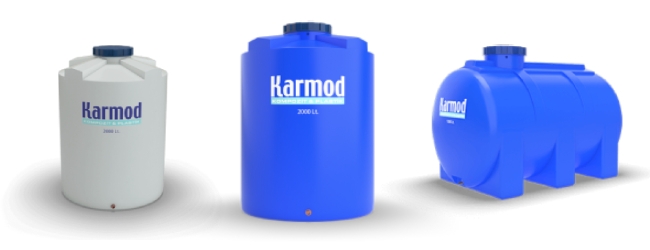
Water tanks have become popular not only in our country but also in many countries around the world. Especially in Africa, where water is more precious, the use of water storage has become widespread, and people buy these tanks to preserve the water they have.
Among the various types of tanks, some stand out, and one of them is the polyethylene water tank models. They are the most economical in terms of price and the lightest in terms of empty weight. Moreover, they are suitable for contact with food, making them versatile and widely used in many areas, especially in rainwater harvesting systems.
However, preserving the quality of water collected through rainwater harvesting systems can be challenging. The quality of stored water is mainly determined by the water itself. If the water's quality has been compromised before storage, rectifying it can be quite difficult. Therefore, it is essential to examine the quality of water before storing it. To preserve high-quality water, you can follow these steps:
1) Filter the Water
In systems like rainwater harvesting, water enters the tank directly from the source. Foreign substances from the collection area may end up in your tank. To prevent this, you can install a fine-mesh filter on the inlet where water enters the tank. Typically, the water inlet is located at the top of the tank, near the lid. If you don't have a filter, you can use a clean grid or wire mesh. If you intend to use the water for drinking, you can consider using nano-level water purification devices. Drinking untreated water can lead to health problems.
2) Choose the Right Location for Water Source
The quality of water is directly linked to its source. If the area where the water is sourced or stored has air pollution, especially heavy metals in the air, the water quality will be negatively affected. Conversely, if the air quality in the area is excellent, the mineral content in the water will likely be higher.
3) Avoid Prolonged Storage
Unless the water is for emergency use, it should not be stored in tanks for extended periods, especially for purposes like drinking, irrigation, or cleaning. Water stored for a long time can lose its nutritive properties.
4) Be Mindful of the Tank's Capacity
Making the right choice in terms of capacity has become a challenge in all sectors. As a rough estimate, if there is a 10-ton water reserve in an area, it would be more logical to opt for 15-ton tanks. Some users buy tanks with half the capacity just for experimentation, without considering their actual needs.
5) Choose Tanks Made of the Right Material
Selecting the right material is a challenge for those who are not well-versed in it. If you want to store a less costly and non-sensitive content, polyethylene tanks may be the best alternative. Tanks made using polyethylene are suitable for contact with food, making them suitable for various types of water storage. They are also lightweight compared to other tanks, with a working temperature of 50 degrees Celsius and a capacity ranging from 50 liters to 25.000 liters.
Another type of tank is made using polyester, known for its high chemical resistance. This feature makes polyester water tank models popular among industrial manufacturers involved in chemical storage. These tanks are produced by combining polyester resin and fiberglass. They are versatile for transporting contents. They can be assembled on-site, and their working temperature can go up to 60 degrees Celsius.
Finally, tanks made of stainless steel are renowned for their durability. The primary material, which is obtained by mixing chrome and nickel, is highly resistant to rust and corrosion. The main material is welded using argon welding in tank design. These tanks have a significant feature, which is their working temperature of 80 degrees Celsius. Thanks to this, they allow the storage of many hot substances.
In this article, we have compiled some information about preserving the quality of stored water and the quality of the environment where the water is stored. If you want to use and purchase these tanks for storing sensitive contents like water, you can contact our customer representatives.


 EN
EN
 DE
DE
 FR
FR
 IT
IT
 ES
ES
 PT
PT
 RU
RU
 AR
AR
 BG
BG
 SR
SR
 GR
GR
 SQ
SQ
 RO
RO
 PL
PL
 HU
HU
 CZ
CZ
 HR
HR
 AZ
AZ
 GE
GE
 AM
AM
 IL
IL